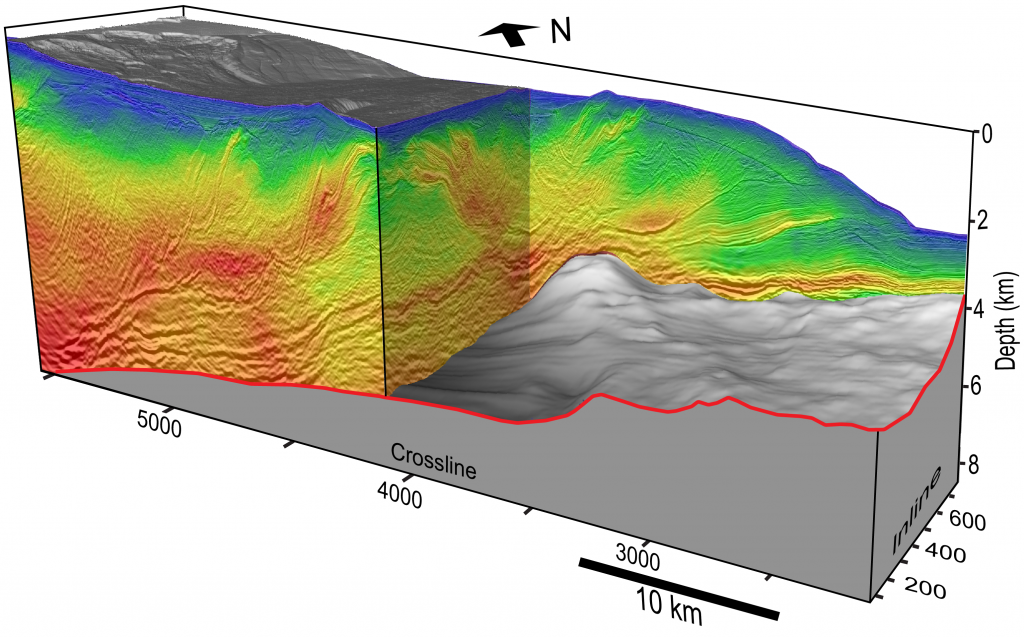Landslides are a perennial threat in California, where the geology and steep topography mean the land is more prone to slipping than in other places. Now, researchers at the University of Texas Institute for Geophysics and UC Santa Cruz studying two large Northern California landslides think they’ve found the key to predicting landslide motion hidden… Continue Reading ‘Giant Lab Experiment’ Leads to New Model for Predicting Landslides
Discovery of Massive Undersea Water Reservoir Could Explain New Zealand’s Mysterious Slow Earthquakes
Researchers have discovered a sea’s worth of water locked within the sediment and rock of a lost volcanic plateau that’s now deep in the Earth’s crust. Revealed by a 3D seismic image, the water lies two miles under the ocean floor off the coast of New Zealand, where it may be dampening a major earthquake… Continue Reading Discovery of Massive Undersea Water Reservoir Could Explain New Zealand’s Mysterious Slow Earthquakes
Sinking Seamount Offers Clues to Slow Motion Earthquakes
Scientists have long puzzled over what happens when seamounts — mountains and volcanoes on the seafloor — are pulled into subduction zones. Now, new research from The University of Texas at Austin shows that when seamounts sink, they leave behind a trail of soft sediments. The researchers think the sediment patches help tectonic pressure escape… Continue Reading Sinking Seamount Offers Clues to Slow Motion Earthquakes
Earthquake Scientists Have a New Tool in the Race to Find the Next Big One
An everyday quirk of physics could be an important missing piece in scientists’ efforts to predict the world’s most powerful earthquakes. In a study published in the journal Science, researchers at The University of Texas at Austin discovered that a frictional phenomenon could be key to understanding when and how violently faults move. That’s because… Continue Reading Earthquake Scientists Have a New Tool in the Race to Find the Next Big One
Slow Slip’ Earthquakes’ Hidden Mechanics Revealed
Slow slip earthquakes, a type of slow motion tremor, have been detected at many of the world’s earthquake hotspots, including those found around the Pacific Ring of Fire, but it is unclear how they are connected to the damaging quakes that occur there. Scientists at The University of Texas at Austin have now revealed the… Continue Reading Slow Slip’ Earthquakes’ Hidden Mechanics Revealed





